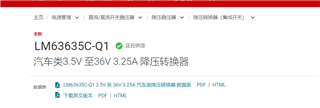Search the E2E, found some similar calculation article for Rboot calculation. Just want to check for LM63635C-Q1, also could use same calculation formula.
Checked spec, not found related parameter that have been marked with red as following picture.
Could you support to provide these values?



